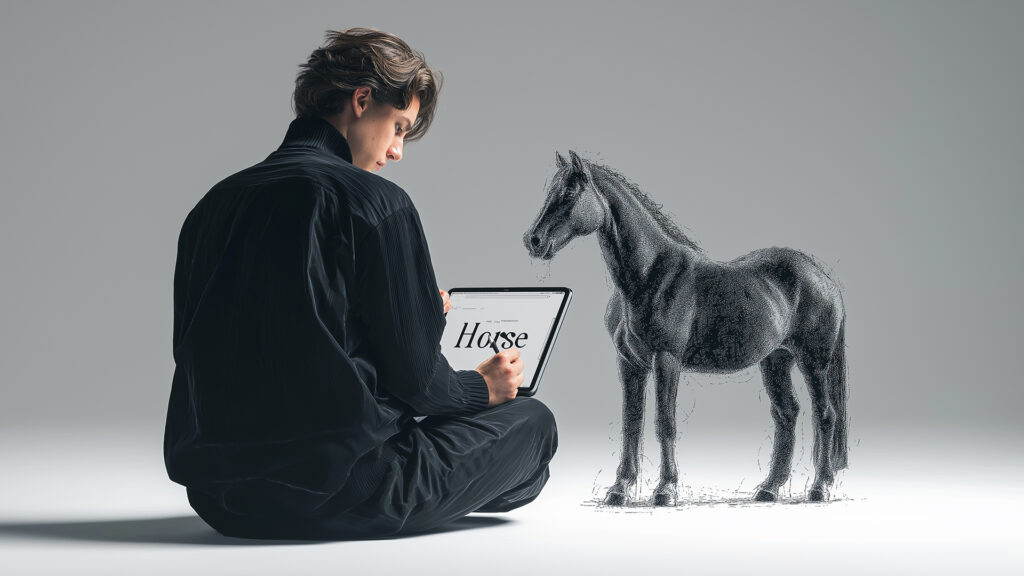Art has followed the evolution of human intelligence for millennia. Well before writing, art records intelligence, extracts it from the body, makes it shareable, often transportable and eternal. It is not, however, verbal intelligence, as in the case of the alphabet, but visual intelligence, or, more broadly speaking, bodily intelligence. Scholars of paleoanthropology trace the…
Art and artificial intelligence
In the 20th century, traditional visual arts, based on manual production processes, were gradually joined by art that focuses on conceptual processes and seeks to return them to a physical, material but also electronic form. Marcel Duchamp inaugurated a conceptual direction that would become dominant in contemporary art, shifting the focus from creating material works…
For decades there have been artists who have approached various types of artificial intelligence with freedom, critical and analytical spirit and drive for innovation. In 2018 the Obvious art collective used the “Edmond De Belamy” algorithm to create the first artwork generated by artificial intelligence recognized and sold in an official context. Refik Anadol, Robbie…
The question about the authenticity of artworks created by AI can only be answered by identifying the new role of the artist in the face of artificial intelligence. The contemporary artist today is no longer alone: the AI is an “other” with whom he or she collaborates. As in Surrealism or twentieth-century creative automatism, today…
In a way, in the authors’ intentions, this document could point to the guidelines of an “ars extensa manifesto,” a call to action by artists and intellectuals whose contribution could be crucial at a particularly critical time for humanity. We are facing a phenomenon that will impact the development of art with the possibility for…
The relationship between Artificial Intelligence, images and language can be seen in the light of recent theories, which have a high potential influence on art. According to research published by MIT Boston – The Platonic Representation Hypothesis, by Minyoung Huh, Brian Cheung, Tongzhou Wang, Phillip Isola – linguistic models of Artificial Intelligence are converging, creating…
One objection related to the “Platonic Representation Hypothesis”, which essentially identifies below Artificial Intelligence models a set of “universal ideas” common to spoken languages and images recognized by humans, derives from the observation that language can express a concept or feeling that many images cannot. It should also be noted that in many cases language…
The 1986 edition of the Venice Biennale was dedicated to the theme “art and science,” and “Ubiqua,” the first “planetary art network,” was held at the Arsenale corderie in Venice. Gualtiero and Roberto Carraro, participating in the Ubiqua exhibition with the Midas group, presented “Video Esperanto”, which identified visual codes based on ideograms linked to…
The “video Esperanto” presented at the Venice Biennale in the 1980s identified the emergence of universally understandable global ideograms. The “video Esperanto” research sought to codify “planetary denominators,” signs emerging from the “melting pot” cauldron of the media’s collective imagination where signs from different peoples and cultures merge. The first core of planetary denominators was…
The ideographic code “Eurographia,” developed by Gualtiero and Roberto Carraro in the 1980s, was based on interlinguistic terms, and associated universal ideograms with universally used Indo-European archetypal terms derived from Latin and Greek, and thus found in all European languages, especially in science and academia. Comparing the vocabularies of major European languages, one realizes that…


